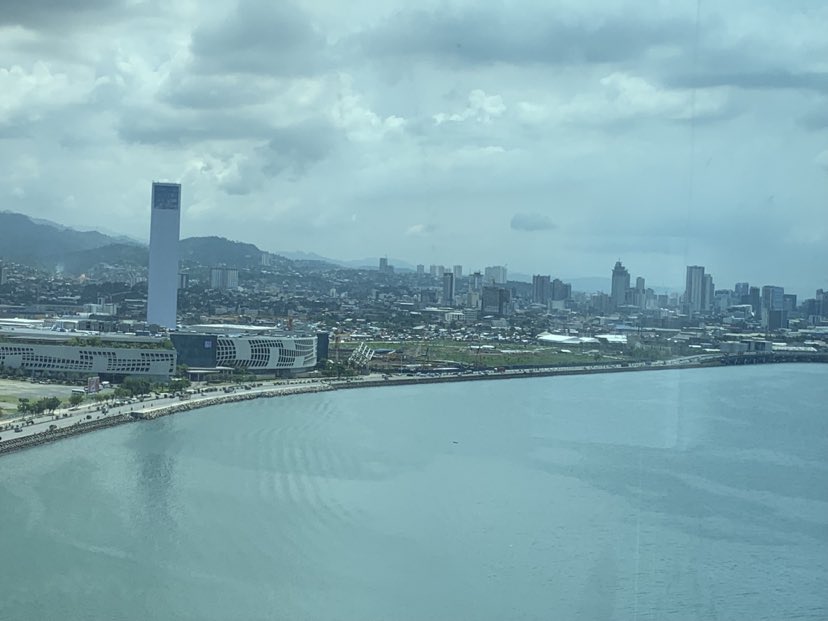

South Road Properties (SRP)
CEBU CITY, Philippines – After Panay Island experienced a power outage in early January 2024, concerns about similar blackouts have arisen in Cebu province and nearby areas. Cebu is a major hub for power consumption in the Visayas region, raising concerns about a potential energy crisis.
However, officials from the Department of Energy – Visayas Field Office Division (DOE-VFOD) and Energy Regulatory Commission (ERC) – Visayas Office asserted at an energy forum, “Kapihan sa Cebu 2024: Central Visayas Energy Situation,” that Cebu is not at risk of a total power outage as long as there is a balance between supply and demand.
DOE-Visayas Chief Engineer Rey Maleza provided insights into the complexities of the energy sector.
Maleza discussed the impact of energy shortages on businesses and tourism, reflecting on past blackouts and the recent events in Panay.
“Probably we have to go back to when we experienced a blackout here in Cebu. One [of the] effects of that is business stops and then visitors were hesitant to come in and it affects everyone… I think looking from that experience and of course with the recent experience in Panay… it is [better] to put in place measures to avert that incident,” he said.
Maleza emphasized the importance of preventive measures to avoid similar incidents and pointed out that while having enough power is crucial, uncontrolled demand growth is a significant challenge.
Moreover, he stressed the importance of balancing demand-side management programs and supply-side investments.
“Aside from attracting investors of power on the supply side, we are also trying to implement programs on the demand side. Meaning to say, we have to conserve power. We have to use efficient equipment [and] you must encourage also people to use other types of resources… everything, just to avert,” he said.
Maleza also suggested using efficient technology like rooftop solar panels and promoting energy conservation to ease grid stress.
However, he noted that achieving energy security requires collaboration among “government agencies and sectors of society.”
“Of course, as in the Department of Energy (DOE), let’s say 11,000 megawatts of indicative power will come on in 2040, yet without the support of other government agencies or other sectors of the society, we cannot achieve that,” he said.
Regarding Cebu’s concerns, Maleza noted that the area currently has a stable supply, thanks to imports from Mindanao and surplus from Negros solar power plants.
“Right now… we (Cebu) are still in the normal condition because pumapasok na kasi yung Mindanao… and meron tayong extra from Negros, from the solar power plant. So, walang problema for the coming days at meron tayong mga reserve,” he said
However, he recognized the risks of unexpected outages and urged for better grid connections and diverse energy sources.
Maleza mentioned plans for alternative electricity routes to connect Cebu with Mindoro and Luzon to minimize risks. He also discussed upcoming projects like the Cebu-Panay link and the Cebu-Bohol interconnection.
“The Mindanao connection [to] Cebu, tapos na and it’s operating right now although sometimes on and off siya… but it’s operational. Ang December natin is Cebu-Bohol dahil il-loop po natin through Leyte… Yung Cebu-Panay, it will be scheduled to be operational… this end of March,” he said.
He cautioned against uncontrolled demand growth and stressed the importance of collaborating with distribution utilities to ensure an adequate supply, particularly for high-demand investors.
Meanwhile, in response to questions about potential opposition of local officials to new power plants, Maleza responded, “So far, wala pako’y nadunggan nga any executives here in Cebu that openly opposing any incoming power plants. Ang problema raman gud nila is the location and what type of power plant should be placed on that area,” he said.
Maleza also revealed that private sectors are considering setting up wind energy projects in Cebu’s mountainous areas.
“Mostly… the wind farm and in the mountainous area of Cebu. Regarding the area, it will be from Boljoon… from South until North kanang sa [mga] mountain range ba,” he said.
While timelines remain tentative, the the move towards renewable energy reflects a broader trend in energy investments across the Visayas region.
Attorney Joel Bontuyan from the Energy Regulatory Commission – Visayas Office shared insights on Cebu’s power infrastructure.
“Kung how soon nga exact date, to be determined [pa]… [but] yeah, this will be wind energy,” he added.
Meanwhile, Attorney Joel Bontuyan from the ERC – Visayas Office shared insights on Cebu’s power infrastructure. He mentioned while there are several power plants in Cebu, like Korea Electricity Power Corp. (KEPCO) in Naga and Therma Power – Visayas in Toledo, a significant portion of the supply comes from Leyte.
“We have power plants here in Cebu. Good example is kanang naas Toledo, Therma Visayas, [and] we also have one in Naga which is KEPCO. But, we also have other power supplies outside of Cebu. Majority of those we [get] our power plants in Leyte…”, he said.
Bontuyan also pointed out the significance of embedded power plants in reducing the risk of transmission line outages.
Looking ahead, he assured the public that Cebu has sufficient energy capacity, minimizing the risk of a total blackout in the province.
“But with regards to Cebu, dakudako naman tag capacity dinhi sa atong probinsya. So, dili nagyud kaayo critical nga simbako ug maputol ang mga linya, ang Cebu naa gihapo’y power. Might not be enough at a given instance, but we will not have a total blackout,” he said. /clorenciana
READ MORE: Cebu’s power struggle: Race to secure energy future to avoid billions in economic losses
Power sector to remain ‘carbon-intensive’ thru 2033
Read more…
